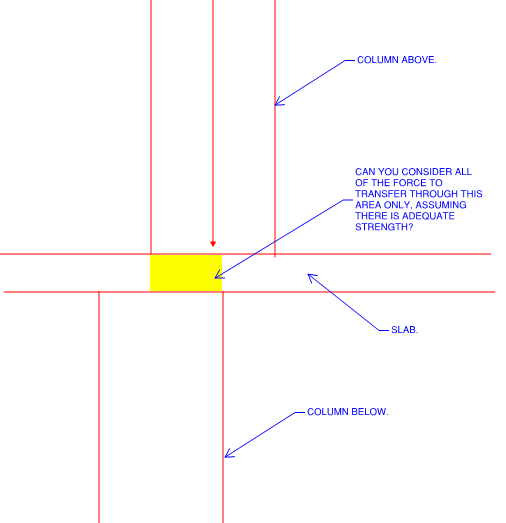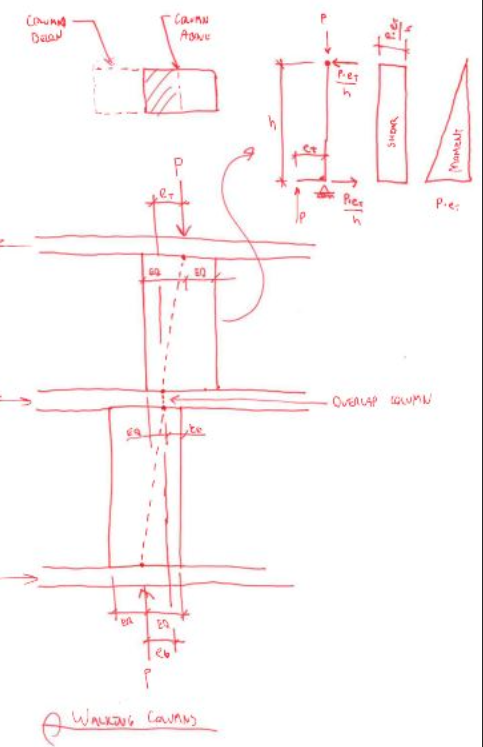I've read several posts on the design checks for 2 conditions that are sometimes seen in concrete flat plate construction: walking columns and transfer slabs.
My understanding is that walking columns use a minimum of 1 floor of full overlap between the columns above and below (like a short wall). The eccentricity is taken out by the floor slabs and transferred to the primary lateral resisting system.
Transfer slabs are used when columns do not align above and below a floor. In this scenario, all of the force has to be carried by the slab in bending and shear. Checks would also include an increased punching shear stress, although there doesn't seem to be a great deal of consensus in exactly how this load path would work.
My question is this: there is a 3rd scenario where columns above and below a slab do not align, but only be a small amount. Say they overlap by 50% or more.
In this situation, would you consider that the slab does not carry any of the column load in bending or shear? Does the entire axial force transfer by bearing in the area of overlap between the 2 columns (perhaps with a small increase considering the slab may help engage more of the lower column)? I still think that in this case the eccentricity is taken out by the floor diaphragms, similar to the first situation I described above. There is probably some additional bending moment applied to the lower column due to the offset of the axial force from the column's geometric axis.
I'm curious what other engineers feel are appropriate checks to make.
My understanding is that walking columns use a minimum of 1 floor of full overlap between the columns above and below (like a short wall). The eccentricity is taken out by the floor slabs and transferred to the primary lateral resisting system.
Transfer slabs are used when columns do not align above and below a floor. In this scenario, all of the force has to be carried by the slab in bending and shear. Checks would also include an increased punching shear stress, although there doesn't seem to be a great deal of consensus in exactly how this load path would work.
My question is this: there is a 3rd scenario where columns above and below a slab do not align, but only be a small amount. Say they overlap by 50% or more.
In this situation, would you consider that the slab does not carry any of the column load in bending or shear? Does the entire axial force transfer by bearing in the area of overlap between the 2 columns (perhaps with a small increase considering the slab may help engage more of the lower column)? I still think that in this case the eccentricity is taken out by the floor diaphragms, similar to the first situation I described above. There is probably some additional bending moment applied to the lower column due to the offset of the axial force from the column's geometric axis.
I'm curious what other engineers feel are appropriate checks to make.


